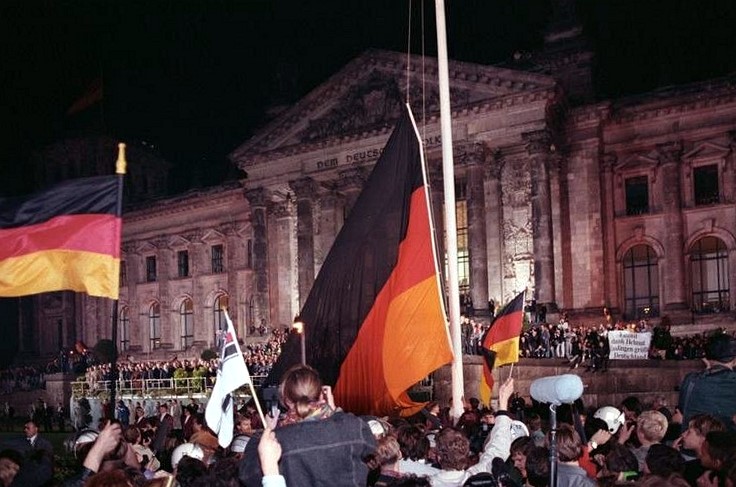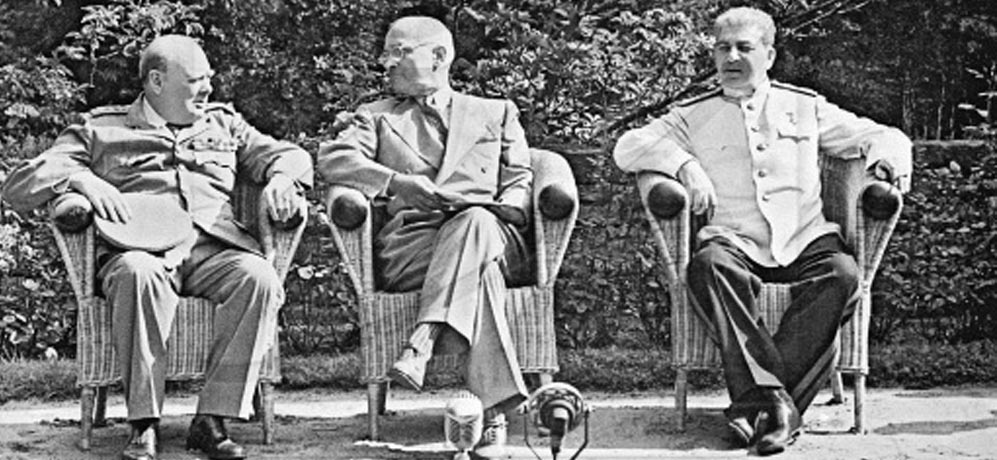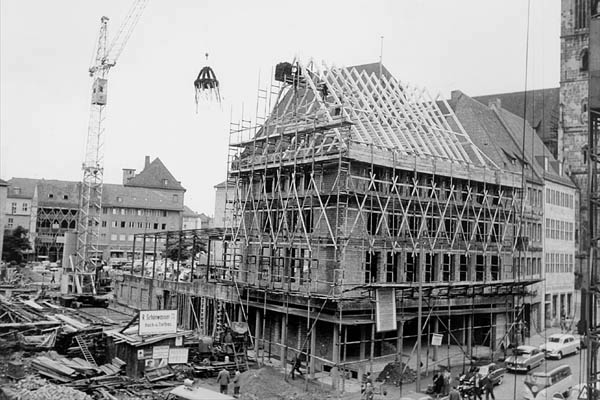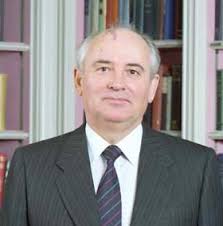
Mikhail Gorbachev was instrumental in the fall of the Berlin wall and the end of the cold war.
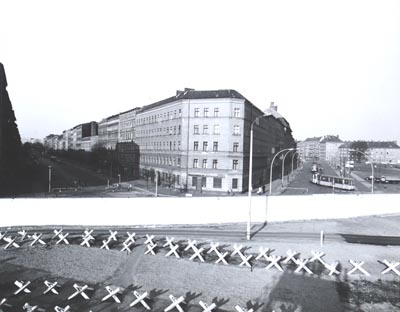
"The Anti Fascist Protection Barrier".
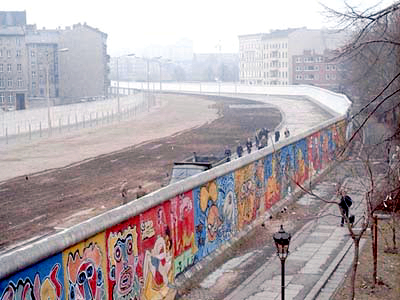
The Berlin wall was used as a canvas for many artists.
Nuclear Test Ban Treaty
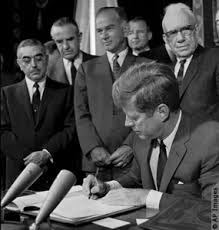 The Comprehensive Nuclear-Test-Ban Treaty (CTBT, or CTBT by its acronym for Comprehensive Nuclear Test-Ban Treaty) is an international treaty first signed on September 10, 1996, which prohibits testing and nuclear in the signatory countries.
The treaty was signed New York on September 24, 1996, when it was signed by 71 states it includded five of the eight nuclear-capable powers. Currently, the CTBT has been signed by 178 countries out of 195, and ratified by 144. The January 16, 2007 ratification of the treaty by all the countries of Europe was completed with the ratification of Moldova.
The Comprehensive Nuclear-Test-Ban Treaty (CTBT, or CTBT by its acronym for Comprehensive Nuclear Test-Ban Treaty) is an international treaty first signed on September 10, 1996, which prohibits testing and nuclear in the signatory countries.
The treaty was signed New York on September 24, 1996, when it was signed by 71 states it includded five of the eight nuclear-capable powers. Currently, the CTBT has been signed by 178 countries out of 195, and ratified by 144. The January 16, 2007 ratification of the treaty by all the countries of Europe was completed with the ratification of Moldova.North Korean Nuclear Tests
India and Pakistan, both confirmed nuclear powers, have refused to sign the treaty, as they did not sign the Treaty on the Non-Proliferation of Nuclear Weapons (NPT). Nor has the Democratic People's Republic of North Korea, which did sign the NPT. India conducted its first nuclear test in 1974, while Pakistan did in 1998, in response to another Indian test. For its part, North Korea announced it had conducted an underground nuclear explosion on October 9, 2006. North Korea conducted a second nuclear test on 25 May 2009. In this instance unlike the first the seismic data indicated an unusually large underground explosion. The explosion occurred a few kilometres away from the detonation of 2006. In 2009 a larger number of seismic stations detected detonation. This was because the power was increased but also had more operating stations. Two hours after the test, the Preparatory Commission for the Organization of the Comprehensive Nuclear-Test-Ban Treaty (CTBTO) data sent to the Member States. The information also helped locate the explosion. In 2009 the estimated area covering 264 km2, 880 km2 compared to 2006.
The treaty will enter into force 180 days after the 44 States listed in Annex 2 of the treaty have ratified it. Nine of them have not yet made, including two nuclear-weapon states under the Treaty on the Non-Proliferation of Nuclear Weapons (the United States and the People's Republic of China ) and the four nuclear states that are outside the NPT (India, Pakistan, Israel and North Korea).
At present 51 countries have not yet ratified the treaty, and of these, seventeen have not even signed.
1. Each State Party has undertaken not to make any test explosion of nuclear weapons or any other nuclear explosion, and to prohibit and prevent any such nuclear explosion at any place under its jurisdiction or control.
2. Each State Party also undertakes to refrain from causing, encouraging or performing any test explosion of nuclear weapons or any other nuclear explosion, or in any way participating in it.
The July 16, 1945, the first nuclear test in the history of the United States was held in Alamogordo, New Mexico. Since then, there have been more than 50 nuclear explosions.
Supporters of gun control began his campaign for the adoption of a treaty banning all nuclear explosions since the early years of the 50s, when public concern about these issues increased as a result of the fallout from the atmospheric nuclear tests and arms escalation in the war.
The Indian Prime Minister Nehru, reflected the existing international concern when, in 1954, proposed the elimination of all nuclear test explosions throughout the globe. However, within the context of the Cold War, the scepticism in the ability to verify compliance with a possible treaty completely banning nuclear test explosions it was the biggest obstacle to the signing of any agreement.
It originated at a time when cooperation between the two rivals of the Cold War, the United States and the Soviet Union, the Antarctic Treaty came into force on June 23, 1961, after it was opened for signature on December 1, 1959. This treaty obliged the signatory states to refrain from conducting "any measures of a military nature, including the testing of any type of weapon" (including nuclear included) in Antarctica, and prohibits the storage in that instead of radioactive waste.
Treaty Partial Test Ban (Partial Test Ban Treaty), 1963
After the Cuban missile crisis, increasing public pressure against nuclear testing because of its implications for health, the environment and global security, as well as concern over the escalation of the arms race led to the signing of the Treaty Partial Test Ban (TPPEN) by the United States, the United Kingdom and the Soviet Union on August 5, 1963. This treaty banning nuclear tests in the atmosphere, underwater and in space. However, neither China nor France (both nuclear powers) signed the treaty, and continued doing nuclear tests in the atmosphere until 1980 and 1974 respectively.
Despite having limited success in trying to ban nuclear testing, it was an important step forward for the final creation of the CTBT.
Treaty on the Non-Proliferation of Nuclear Weapons (Nuclear Non-proliferation Treaty), 1968
The signing of the Treaty on the Non-Proliferation of Nuclear Weapons in 1968 was another major step forward. Under the treaty, non-nuclear states prohibit the possession, manufacture or acquisition so that it is nuclear weapons, while the United States, Britain, France, Russia and China, the only nuclear states nuclear states in the time of signature of the treaty undertake not to transfer nuclear weapons technology to other non-nuclear countries. The ultimate goal of the treaty is to achieve total nuclear disarmament.
Negotiations for the CTBT, 1993
Given the political situation that prevailed for decades it was not achieved much progress towards nuclear disarmament until 1991. That year TPPEN signatory members supported a conference to amend the treaty to discuss the proposal to make it an instrument that would prohibit any trial Nuclear. In 1993, with the support of the United Nations General Assembly, they began negotiations for the creation of a treaty completely banning nuclear testing.
One of the most important issues of the negotiations were the priorities that each country had regarding the treaty. The countries belonging to the Non-Aligned Movement (NAM) were very concerned with the proliferation vertically (production of more and more bombs and improving nuclear technology), while the nuclear powers were more focused on the proliferation horizontally (production nuclear bombs by more and more countries).
Adoption of the CTBT, 1996
During the next three years intensive efforts were made in drafting the text and its two annexes. However, the Conference on Disarmament, where they were conducting the negotiations failed to reach a consensus on the adoption of the text, mainly because of opposition from India. Finally Australia sent the text to the United Nations General Assembly in New York, where he presented a vote. On 10 September 1996 the Assembly adopted the text with 158 votes in favour, three against (the Kingdom of Bhutan, India and Libya) and five abstentions (Cuba, the Republic of Mauritius, Syria, the Lebanon and Tanzania). The September 24, 1996 the Comprehensive Nuclear-Test-Ban Treaty was opened for signature. That same day the five NPT nuclear powers and 66 other countries signed the treaty. At present, the CTBT has been signed by 178 countries out of 195, and ratified by 144. Among the countries that have signed but not ratified the treaty are the United States, and China.
Compliance of the CTBT
The body responsible for monitoring compliance with the CTBT is the Preparatory Commission for the Organization of the Comprehensive Nuclear-Test-Ban Treaty or CTBTO (for its acronym in English, Comprehensive Test Ban Treaty Organization). This organization, based in Vienna, Austria, was established on November 19, 1996 and its mission is to ensure that no nuclear tests are produced by member states. It counts with the International Monitoring System or IMS (International Monitoring System), consisting of a network of sensors scattered around the world can detect the effects of a nuclear explosion, the International Data Centre or IDC (of International Data Centre), which is responsible for collecting and analyzing data from IMS and send the results to member countries, and a team of OSI or OSI (On-Site Inspection), which is responsible for collecting information directly of those suspected sites it has been subject to a nuclear test, verifying if this test actually took place.
The sensor network of the International Monitoring System comprises seismic sensors, hydro acoustic, infrasound and radioisotope. It has 321 stations located around the globe, plus 16 radioisotope laboratories, of which 70% is already operational. The data collected by this network of sensors are sent to the IDC in Vienna for further processing and analysis. When data suggesting a possible nuclear detonation register a site inspection team to investigate on the ground and see if really the explosion occurred is sent. Only on-site inspections may be carried out once the treaty enters into force.

